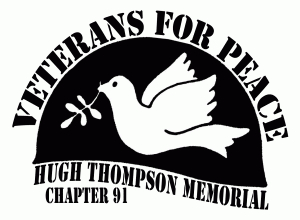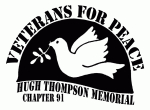By Marjorie Cohn and Published on Truthout
Mai Giang Vu was exposed to Agent Orange while serving in the Army of South Vietnam from 1968 to 1974. He carried barrels of chemicals to spray in the jungle. His sons were born in 1974 and 1975. They were unable to walk or function normally. Their limbs gradually “curled up” and they could only crawl. By age 18, they were bedridden. One died at age 23; the other at age 25.
Nga Tran is a French Vietnamese woman who worked in Vietnam as a war correspondent. She was there when the US military began spraying chemical defoliants. A big cloud of the agent enveloped her. Shortly after her daughter was born, the child’s skin began shedding. She could not bear to have physical contact with anyone. The child never grew. She remained 6.6 pounds – her birth weight – until her death at the age of 17 months. Tran’s second daughter suffers from alpha thalassemia, a genetic blood disorder rarely seen in Asia. Tran saw a woman who gave birth to a “ball” with no human form. Many children are born without brains; others make inhuman sounds, Tran said. There are victims who have never stood up. They creep and barely lift their heads.
Rosemarie Hohn Mizo is the widow of George Mizo, who fought for the US Army in Vietnam in 1967. After he refused to serve a third tour, Mizo was court-martialed, spent two and a half years in prison and received a dishonorable discharge. Before his death from Agent Orange-related illnesses, Mizo helped found the Friendship Village where Vietnamese victims live in a supportive environment.
Dr. Jeanne Stellman, who wrote the seminal Agent Orange article in Nature, said, “This is the largest unstudied [unnatural] environmental disaster in the world.”
Dr. Jean Grassman, from Brooklyn College at the City University of New York, stated that dioxin (the active ingredient in Agent Orange) is a potent cellular disregulator that alters several pathways and disrupts many bodily systems. She said children are very sensitive to dioxin, and the intrauterine or postnatal exposure to dioxin may result in altered immune, neurobehavioral and hormonal functioning. Women pass their exposure to their children both in utero and through the excretion of dioxin in breast milk.
These were five of the 27 witnesses who testified at the International Peoples’ Tribunal of Conscience in Support of the Vietnamese Victims of Agent Orange, which was held in Paris in 2009. I served as one of seven judges from three continents. We heard two days of testimony from Vietnamese and US victims of Agent Orange, witnesses and scientists, including the five witnesses cited above. We saw firsthand horribly disfigured individuals who had been exposed to Agent Orange during the Vietnam War.
The panel of judges found the following:
- From 1961 to 1971, the US military sprayed chemical products that contained large quantities of dioxin in order to defoliate the trees for military objectives.
- The chemical products caused:
-indirect damage to the children of those exposed to dioxin, including severe physical deformities, mental and physical disabilities, diseases, and shortened life spans;
-damage to the land and forests, water supply, and communities of Vietnam, some of which may be permanent. This includes the extinction of animals that once inhabited the forests and jungles of Vietnam, disrupting communities that depended on them; and
-erosion and desertification that will change the environment, contributing to the warming of the planet and dislocation of crop and animal life. The damage to the environment of Vietnam is “ecocide.”
After examining the evidence, the panel determined that the US government and the chemical manufacturers knew that dioxin, one of the most dangerous chemicals known to humans, was present in one of the components of Agent Orange. Yet they continued to use it and in fact suppressed the 1965 Bionetics study that showed dioxin caused many birth defects in experimental animals. It was not until the results of that study were leaked that the use of Agent Orange was stopped.
The panel also concluded that the US war in Vietnam was an illegal war of aggression (crime against peace) against a country seeking national liberation, in violation of the United Nations Charter. It further decided that the use of dioxin was a war crime because it qualified as a poisoned weapon in violation of the Hague Convention and customary international law. Finally, the panel found that the use of dioxin was a crime against humanity, as it constituted an inhuman act perpetrated against a civilian population in connection with a crime against peace and war crimes.
Several international treaties provide the right to an effective remedy for violations of human rights law. They include the International Covenant on Civil and Political Rights, the International Convention on the Elimination of All Forms of Racial Discrimination and the Convention Against Torture and Other Cruel, Inhuman or Degrading Treatment or Punishment. The United States has ratified all of them.
Moreover, in the 1973 Paris Peace Accords, the Nixon administration promised to contribute $3 billion for compensation and postwar reconstruction of Vietnam. That promise remains unfulfilled.
Although US veterans of the Vietnam War have received some compensation for Agent Orange-related illnesses, the Vietnamese people have never seen a dime. The US government has funded the cleanup of dioxin at the Danang airport, only one of the 28 “hot spots” still contaminated by dioxin.
Rep. Barbara Lee (D-California) has introduced H.R. 2114, the Victims of Agent Orange Relief Act of 2015. If enacted, the bill would lead to the cleanup of dioxin and arsenic contamination still present in Vietnam. It would also provide assistance to the public health system in Vietnam directed at the 3 million Vietnamese affected by Agent Orange. It would extend assistance to the affected children of male US veterans who suffer the same set of birth defects covered for the children of female veterans. It would lead to research on the extent of Agent Orange-related diseases in the Vietnamese-American community, and provide them with assistance. Finally, it would lead to laboratory and epidemiological research on the effects of Agent Orange.
Following the 2009 Paris tribunal, I participated in a delegation to Vietnam to present our findings to President Nguyen Minh Triet of the Socialist Republic of Vietnam. I told the president that it struck me that even as US bombs were dropping on the Vietnamese people, they distinguished between the US government and the US people. The president responded, “We fought the forces of aggression but we always reserved our love for the people of America … because we knew they always supported us.”
Now, 40 years after the end of the Vietnam War, we must support the Vietnamese people who continue to suffer some of the most horrific legacies of that war. Contact your representative and demand that he or she co-sponsor H.R. 2114.








